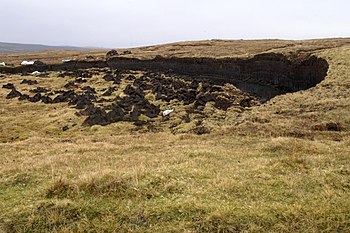Patrick Geraghty, his wife Mary Killeen and their six children arrived at the Port of Boston on 22 May 1884 aboard the Scandinavian. Unlike many of those leaving Ireland they did not have to travel far to board the vessel, it stopped in Clews Bay on it's route from Glasgow to Boston. Westport is on the south end of Clew's Bay.
The Scandinavian, which was owned by Allan Line of Liverpool, was launched in Greenoch in 1869. The design was 338.7ft by 40ft with a gross burden of 2840. It had been reengineered in 1879 with new compound engines by J. Jack Roolo & Co. of Liverpool. The new engines were 400 HP and could travel at 12 knots.
 |
The National Archives at Washington, D.C.; Washington, D.C.; Series Title: Passenger Lists of Vessels Arriving at Boston, Massachusetts, 1820-1891;
Record Group Title: Records of the U.S. Customs Service; Record Group Number: 36 |
Also on the Scandinavian and also bound eventually for St. Paul are Martin Ludden and family, M. Burke and family, Jno. Foster and family, Mary Nolan (alone), Mary McDonagh and 2 children, Margaret Darey, Bridget and Marg. Tierney.
We don't know what, if any, connection these families had to the Geraghty family, but we do know that Patt's mother was a Ludden.
Why Patt chose to leave Ireland at this time is unknown. It was possible that they were involved in an assisted emigration scheme.One such scheme was set up in the most deprived areas of Ireland received help in emigrating to the U.S. or Canada in search of a better life. Known as “The Tuke Fund” it was named after James Hack Tuke, a Quaker from York who sought to address starvation and deprivation in the West of Ireland
Inaugurated in March 1882, “The Tuke Fund” described its goal as “the assistance to emigration of the small holders of the West of Ireland” and every detail was thought of to ensure the comfort and welfare of the emigrants. James Tuke himself had previously travelled to the U.S. and Canada to ascertain suitable areas for the settlement of the emigrants.
The scheme was voluntary. Only families would be assisted, thereby a holding would become vacant which could be given to other smallholders improving their circumstances. Where they could afford it, the emigrants would be asked to contribute something towards the cost, but due to the extreme poverty of the people this was usually not possible. Emigrants would only be sent to the United States if they could produce recent letters from friends who were willing to help them, others were sent to the villages and small towns of Canada.
We know that the Scandinavian had carried Tuke's fund passengers in the past (21 Apr 1883 to Quebec), we know that those who were being assisted by Tuke's Fund sailed from Westport in Clew's Bay and we know that some had gone to St. Paul and evidenced by Mr Tuke's Report No. 2, Clifden Union July 1883.
"The following extract from a recent letter shows the high wages at once obtainable by both men and women.
"It is dated St. Paul, June 14th. 'As to employment,' Father Mahoney writes, "the males all had it, or would have it, within a day or two, -- indeed, it was said a wan could hardly miss work unless he expressly tried to shirk it. The worst pay, 1.25dols. 1.50dols. was common, and on the railways 1.75 dols. and 2 dols. per day was obtained. The females, whether married or single, were, if possible, better off than the men--they were wanted everywhere for work the most ignorant could easily and satisfactorily do; they get regular pay of not less than 1dol. a day. For girls even as young as thirteen an incredibly brisk demand (existed), and no less was thought of than 5dols. a week with board. It astonished me to see how even slow dull girls were hired for 10dols. a month and board."
However, it does not appear that the Union of Westport, where the Geraghty's lived was included in the scheme. Neighboring Newport was, as were other Unions further north in Mayo and also in Galway. Perhaps the reports from those who had emigrated to St. Paul convinced the Geraghty family it was time to leave the abject poverty of County Mayo.


 Those report cards, although better than those of my father from Notre Dame, were not quite up to the standard we often felt were expected of us growing up. Why was that so, there was never any punishment or reward for grades, just the expectation we would do our best and our best should probably be all "A"s.
Those report cards, although better than those of my father from Notre Dame, were not quite up to the standard we often felt were expected of us growing up. Why was that so, there was never any punishment or reward for grades, just the expectation we would do our best and our best should probably be all "A"s.












